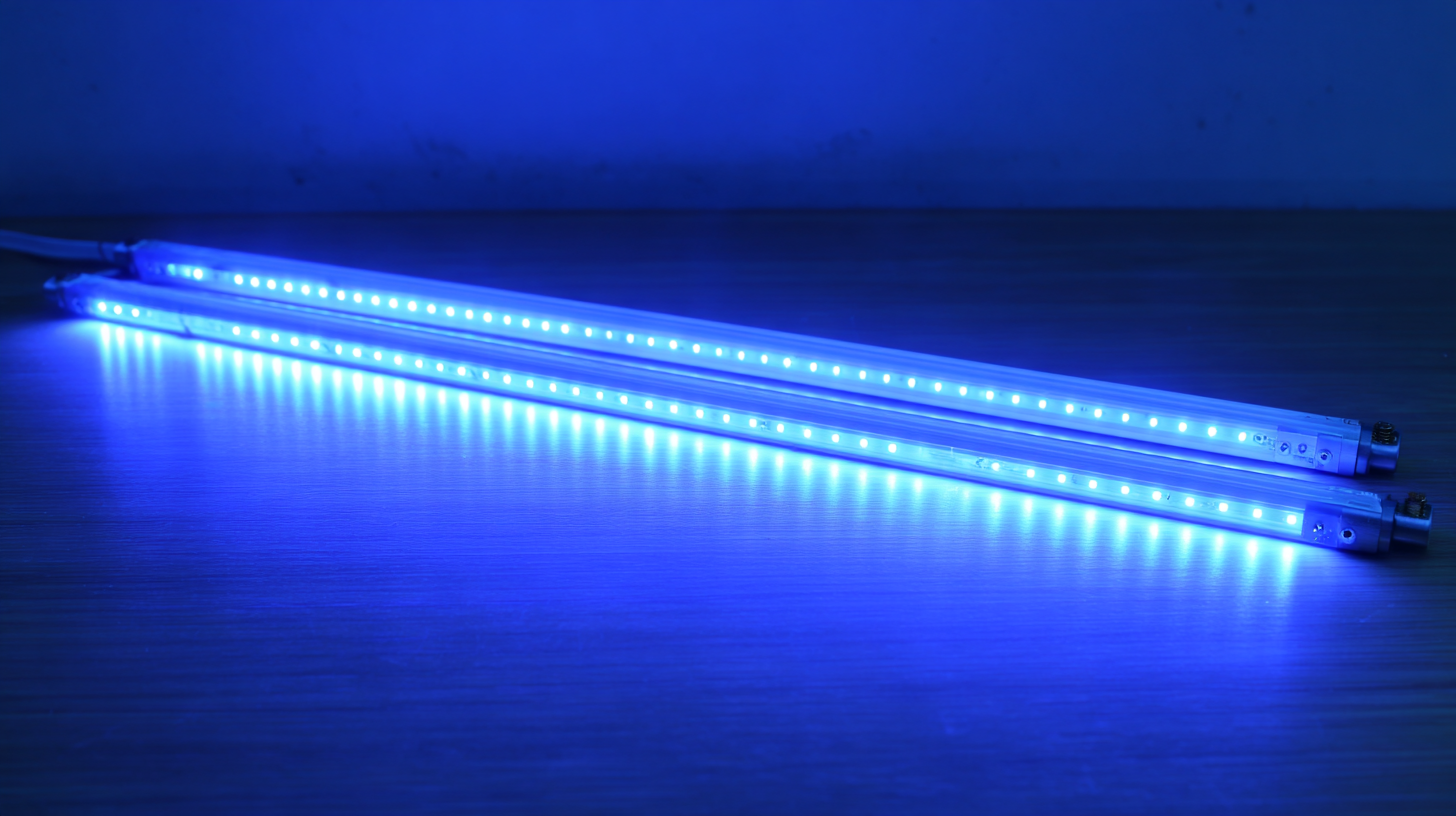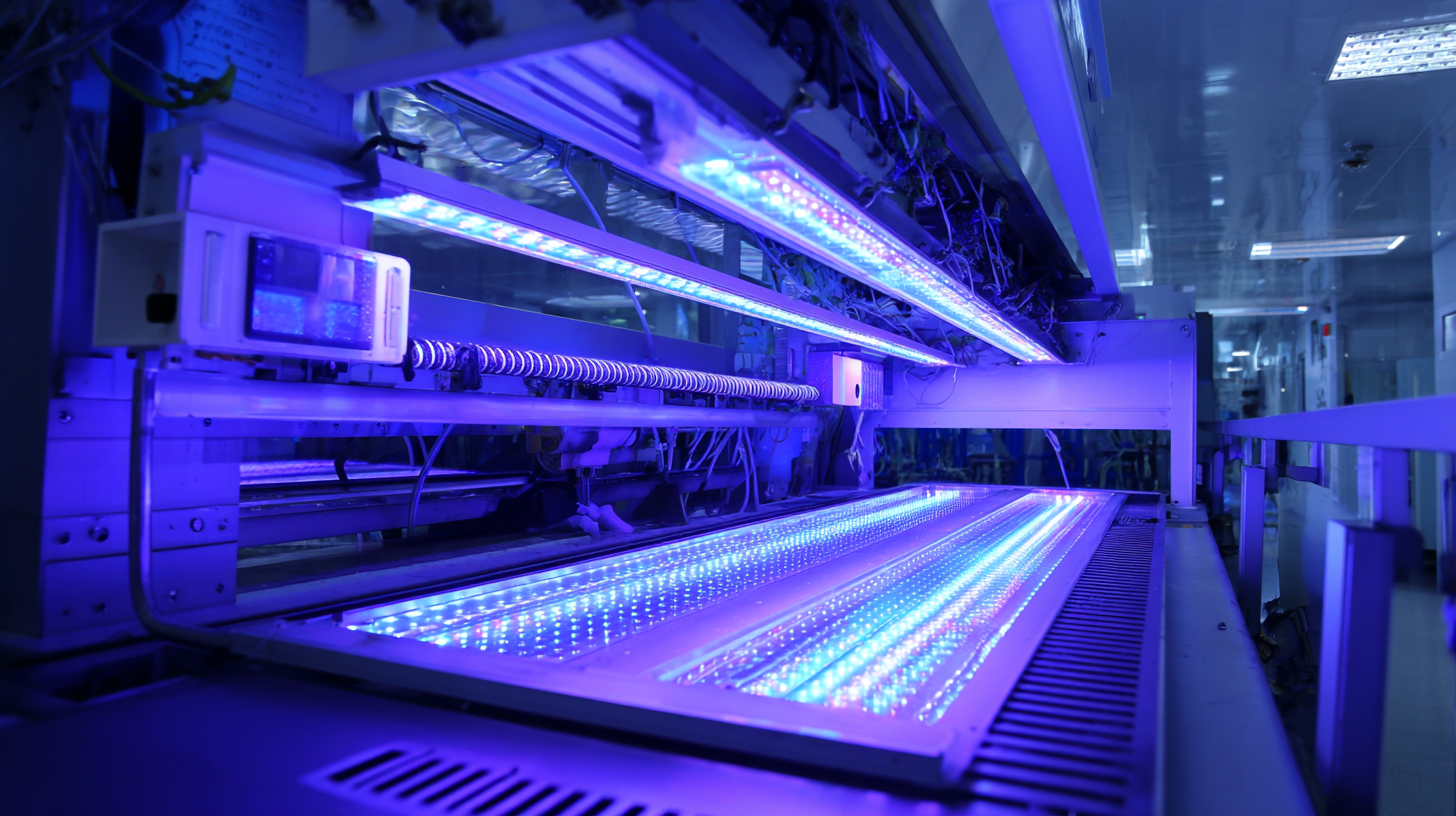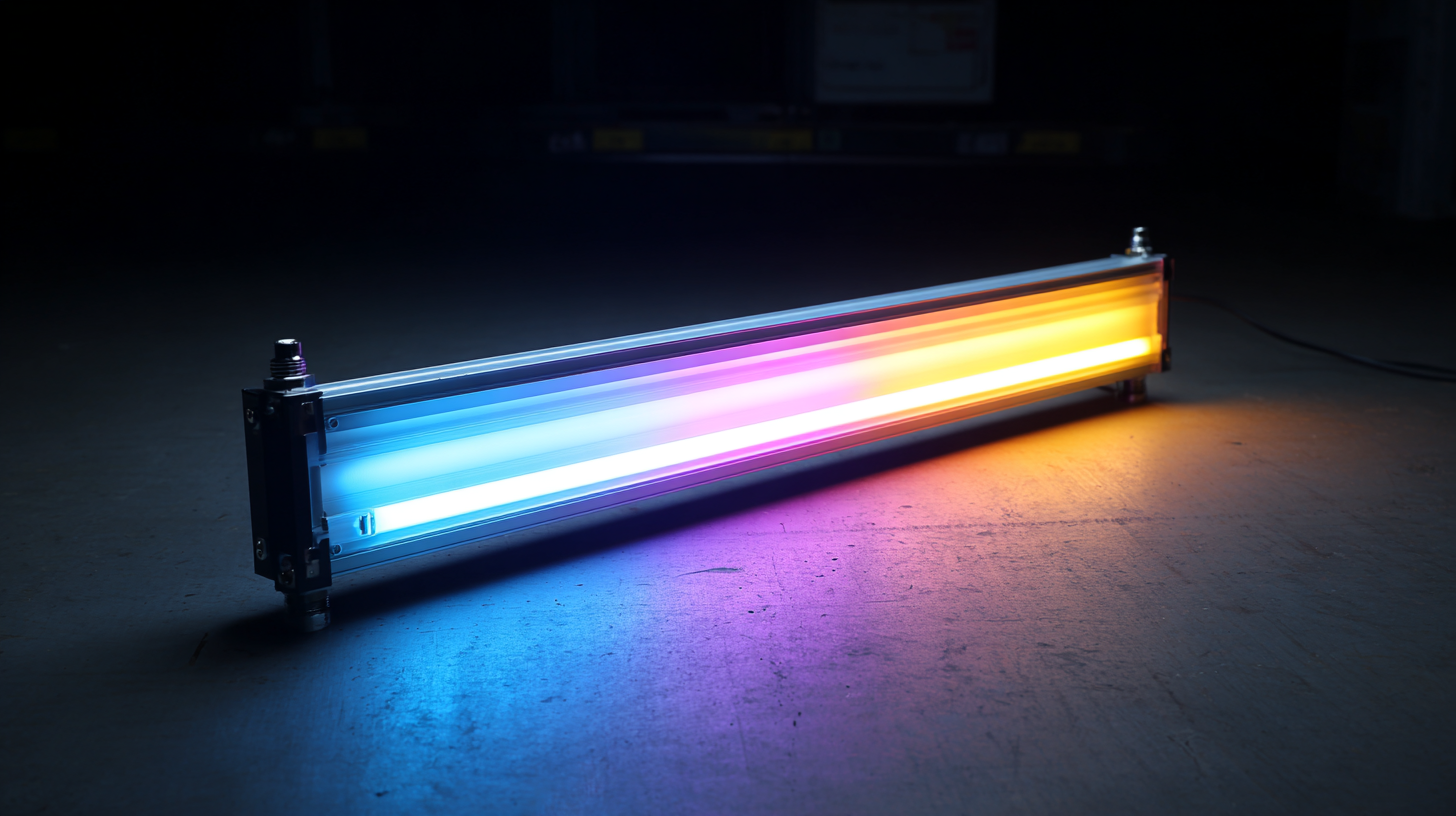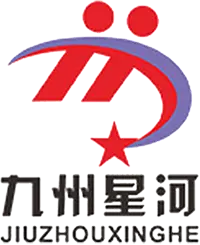Leave Your Message
-
Phone
-
E-mail
-
Whatsapp
In the rapidly evolving landscape of manufacturing, LED curing lamps have emerged as a game changer, driving efficiency and quality in various applications. These innovative lamps harness the power of light to cure or harden coatings, inks, and adhesives, providing manufacturers with superior results that traditional methods struggle to match. Among the leading producers of LED curing lamps, China stands out for its remarkable advancements in technology and commitment to excellence. This blog explores a selection of the best LED curing lamps from China, showcasing how they exemplify cutting-edge engineering and design. With a focus on performance, durability, and energy efficiency, these products not only meet the demands of modern manufacturing but also pave the way for sustainable practices in the industry. Join us as we delve into the world of LED curing lamps, highlighting the top examples that are setting global standards in manufacturing excellence.

 In the ever-evolving landscape of manufacturing, curing lamps have become integral in enhancing the quality and efficiency of production processes. There are several types of curing lamps, each with unique features that cater to specific industrial needs. Ultraviolet (UV) curing lamps, for example, have gained immense popularity due to their ability to rapidly cure coatings, inks, and adhesives. According to a report from MarketsandMarkets, the global UV curing system market is projected to grow from $1.39 billion in 2021 to $2.03 billion by 2026, demonstrating an annual growth rate of 7.8%. This provides significant insights into the increasing demand for efficient curing solutions in manufacturing.
In the ever-evolving landscape of manufacturing, curing lamps have become integral in enhancing the quality and efficiency of production processes. There are several types of curing lamps, each with unique features that cater to specific industrial needs. Ultraviolet (UV) curing lamps, for example, have gained immense popularity due to their ability to rapidly cure coatings, inks, and adhesives. According to a report from MarketsandMarkets, the global UV curing system market is projected to grow from $1.39 billion in 2021 to $2.03 billion by 2026, demonstrating an annual growth rate of 7.8%. This provides significant insights into the increasing demand for efficient curing solutions in manufacturing.
Another notable type is LED curing lamps, which offer considerable advantages over traditional UV lamps. These LED lamps not only consume less energy but also have longer lifespans and produce less heat, minimizing the risk of damage to sensitive substrates. A study by Grand View Research highlights that the global LED curing market is expected to reach $1.3 billion by 2025, largely attributed to their eco-friendliness and operational savings. Moreover, manufacturers are increasingly adopting hybrid curing systems, which combine both UV and LED technologies, providing versatility and improved productivity across various applications.
The global UV curing lamps market is poised for remarkable growth, projected to reach $4.543 billion by 2025 and soaring to $8.243 billion by 2033. This surge can be attributed to the increasing demand for efficient and sustainable production processes across various industries. As manufacturers seek to optimize their operations, UV curing lamps stand out for their ability to enhance production efficiency significantly.
One of the key advantages of UV curing lamps is their rapid curing time, which enables companies to accelerate their production lines. By using UV light to instantly cure inks, coatings, and adhesives, manufacturers can reduce downtime and improve throughput. Additionally, the energy efficiency of UV lamps contributes to lower operational costs, making them a smart investment for businesses aiming to remain competitive in an evolving market.
Moreover, UV curing technology is environmentally friendly, producing minimal volatile organic compounds (VOCs) and reducing waste. As industries increasingly prioritize sustainability, UV curing lamps present an attractive solution that not only meets regulatory standards but also enhances product quality. This combination of efficiency and sustainability is driving the growing adoption of UV curing technology across the globe, marking a notable trend in manufacturing excellence.
The comparison between LED curing lamps and traditional curing technologies reveals significant advancements in the UV LED market, particularly as the industry anticipates reaching a size of USD 23.47 billion by 2034, growing at a compound annual growth rate (CAGR) of 6.69%. This growth is attributed to the increasing application of UV curing technology in inks, coatings, and adhesives, where rapid drying and curing are essential. Industries are shifting towards energy-efficient solutions that not only save time but also reduce environmental impacts, as evidenced by recent studies highlighting the benefits of UV LED systems over traditional mercury lamps.

Moreover, the rise in interest for energy-curable inks and coatings aligns with the broader market trends favoring UV LEDs. The growth is driven by notable advantages such as sustainability and cost-effectiveness. UV LEDs offering specific wavelengths for various applications, including UV-A and UV-B technologies, are transforming how businesses approach curing processes. As manufacturers continuously innovate, the development of high-performance UV-curing materials has also expanded, enhancing wear resistance and antibacterial properties in coatings, thereby meeting the demands of modern applications across multiple sectors.
Curing lamps have become integral to various industries due to their ability to provide efficient and quick curing processes. In the manufacturing sector, ultraviolet (UV) curing lamps are widely employed in surface coatings, adhesives, and inks, enabling faster production cycles and improved product durability. According to a report by Grand View Research, the global UV curing system market size is expected to reach approximately USD 3.4 billion by 2025, growing at a compound annual growth rate (CAGR) of 12.2%. This growth is fueled by the increasing demand for eco-friendly and energy-efficient curing methods across various applications.
In the automotive industry, curing lamps are crucial for the application of paint and coatings that enhance the performance and aesthetics of vehicles. The UV light initiates a chemical reaction that allows for rapid hardening, significantly reducing production bottlenecks. Research by MarketsandMarkets suggests that the automotive paint market alone is projected to grow at a CAGR of 4.6% from 2020 to 2025, with UV-curable paints gaining traction due to their ability to minimize Volatile Organic Compounds (VOCs) emissions. Additionally, these lamps find applications in the medical device manufacturing sector, where sterilization and curing processes are critical for ensuring product safety and performance reliability. With such diverse industry applications, the role of curing lamps continues to expand, setting the stage for innovative developments in manufacturing technology.
The curing lamp industry is on the cusp of significant evolution as technological advancements and evolving industry standards shape its future. With increasing demand for efficient and high-quality curing processes across various sectors such as automotive, electronics, and dental, manufacturers are adopting cutting-edge technologies like UV-LED curing. This trend not only enhances productivity but also reduces energy consumption and improves operational safety, aligning with global sustainability goals.
As the market expands, regulatory bodies are likely to introduce more stringent standards that govern performance, safety, and energy efficiency of curing lamps. Companies that prioritize compliance and innovation will not only meet legal requirements but will also gain a competitive edge. The shift towards smart curing solutions, which incorporate IoT capabilities for real-time monitoring and optimization, is also expected to play a crucial role in setting new industry benchmarks. The synergy of innovation and compliance will be key in driving the future of curing lamp technology, making it an exciting time for manufacturers and users alike.
| Dimension | Current Value | Predicted Value (2025) | Trend |
|---|---|---|---|
| Market Size (USD Billion) | 2.5 | 4.0 | Growing |
| Export Volume (Units) | 3,000,000 | 4,500,000 | Increasing |
| Average Lifespan (Hours) | 20,000 | 25,000 | Improving |
| Energy Efficiency (% of Energy Used) | 80% | 90% | Enhancing |
| Regulatory Standards Compliance | ISO 9001 | ISO 14001 | Advancing |
